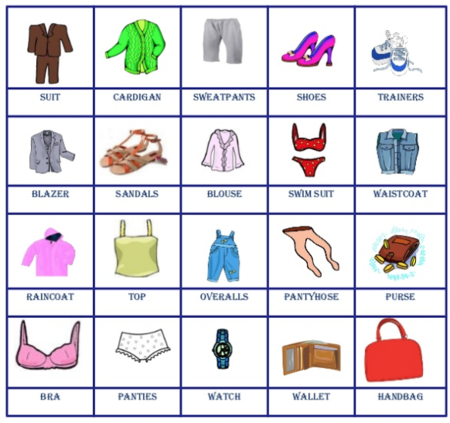Session 12, Primer Grado – Comunicación y Lenguaje Idioma Extranjero
| Guías metodológicas para el docente de Ciclo Básico/Comunicación y Lenguaje Idioma Extranjero/Primer Grado/Session 12 | |
|---|---|
| (Selecciona [Contraer] para reducir el recuadro, [Expandir] para ver contenido no mostrado). | |
| Autor | Ministerio de Educación de Guatemala |
| Área | Comunicación y Lenguaje Idioma Extranjero |
| Nivel y/o grado | Básico 1er grado |
| Competencia | |
| Indicador | |
| Saber declarativo | |
| Tipo de licencia | Derechos reservados con copia libre |
| Formato | HTML; PDF |
| Responsable de curación | Editor |
| Última actualización | 2020/09/14 |
Por favor, califica el recurso solo si lo has revisado y/o o usado.
Introduction[editar | editar código]
Students will be able to combine information about directions, characteristics of products and use of quantities.
Didactic resources[editar | editar código]
- board
- markers
- pen
- notebook
- sheets of paper
- big sheet of brown paper
- crayons
- English-Spanish/Spanish-English dictionary
- 3 banners with pictures or drawings of pieces of clothing
- recorded music
Session 12, Period 1[editar | editar código]
Initial Phase[editar | editar código]
Ask students to close their eyes for a moment and think of any city or community in the world. What services must these include? Are shops one of the items that must be present? Write your student's answers on the board.
Verify that students consider shops in their community and maps.
Intermediate Phase[editar | editar código]
¿What kind of activity is shopping? For that, have them use their workbooks and complete activity 12.1.
Verify that students understand the meaning of window shopping. Help out with new vocabulary in the Wikipedia entry.
Wrap up[editar | editar código]
Write on the board the words: customer, browse, retailer, suitable, leisure. For each word write ideas or examples so students will have a basic idea about their meaning. For the next period ask your students to bring three pictures from newspaper advertisments illustrating items like pieces of clothing, personal objects, or household objects.
Session 12, Period 2[editar | editar código]
Initial Phase[editar | editar código]
Prepare at least 3 banners with pictures or drawings of pieces of clothing, household items, common personal objects, etc. Here is an example, but you must have ready a dictionary in case someone brings
an object that you didn't include on your list.
Ask your students to mark their names with a piece of masking tape on the pictures of items they also included in their illustrations.
Verify that students brought their picture and perform the task.
Intermediate Phase[editar | editar código]
Students will make an information display for each of their items, as shown in activity 12.2 in the student workbook. Tell them to look on the banners to find information in case they don't know the name or how to spell the items they brought. If the item is not in the banners that you made they can consult the dictionary.
Verify that students are classifying the pictures correctly. Be available for vocabulary questions.
Wrap up[editar | editar código]
Make sure students have completed their displays. Then place all the student's items and displays in a box or a safe place to be used in the next period.
Session 12, Period 3[editar | editar código]
Initial Phase[editar | editar código]
Ask the students to take out from the box the pictures and displays they prepared in period 2. When all students have their pictures out, ask them to group the items. For example, they should put blouses in one area, men's pants in another, and watches or jewelery in a third.
Ask students to listen to your instructions using TPR to create the display. Verify that they follow your instructions.
Intermediate Phase[editar | editar código]
Once students have grouped all the items and placed them in displays they should make groups of three.
Play some music and ask them to walk in trios around the classroom as if it were a shopping center. They will pretend they are window shopping and looking at all the items.
Write the following expressions on a piece of brown paper. Go over these with the students. Model their use when necessary. Encourage the students to make comments about the items like:
- What a nice shirt!
- What a nice color!
- How much is it?
- What size is it?
- I like those pants!
- I need a watch!
- How much are they?
- I like yellow much better!
Verify that students are pretending to window shop. Listen for the expressions they are using and how they are using them.
Wrap up[editar | editar código]
Five minutes before the end of the session, stand in the middle of the classroom and announce: “Time to shop!” This will mean it is time for the students to collect the pictures they brought as homework and take them back.
After everyone has collected their pictures, ask three or four students to tell how they felt doing this activity.
Refer students to the rubric in the student workbook to evaluate their learning from this session.
Sistema social para expresar ideas y manifestarlas al prójimo. Este sistema existe dentro de un entorno social (sistema social) y un sistema lingüístico (ejemplos son el español, francés, k’iche’, kaqchikel, etc.) Tienen que existir ambos sistemas para que pueda existir la comunicación.

